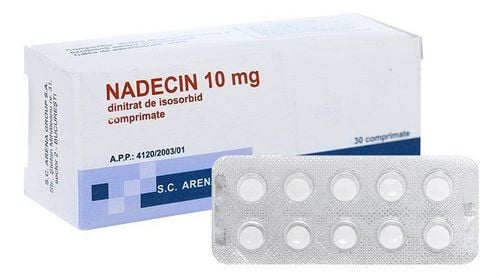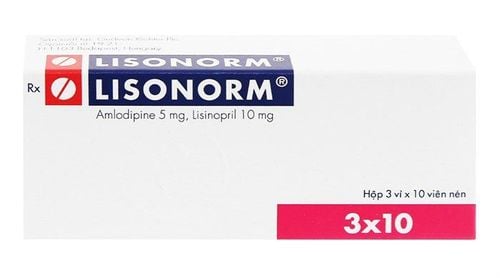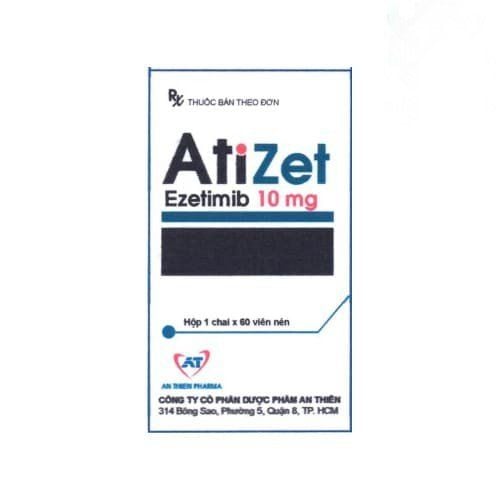This is an automatically translated article.
Telmiskaa 40 belongs to the group of cardiovascular drugs whose main ingredient is telmisartan. It is commonly indicated for the treatment of essential hypertension by its specific mechanism of antagonism of the angiotensin II receptor (type AT1).
1. Uses of Telmiskaa 40
The active ingredient Telmiskaa 40 is telmisartan which is an orally active and specific angiotensin II type AT1 receptor antagonist. Telmisartan replaces angiotensin II by having a very high affinity for its binding site on the AT1 receptor mechanism responsible for angiotensin II activity. Telmisartan binds selectively to the AT1 receptor and this binding is usually long-lasting. Telmisartan generally has no affinity for other receptors including AT2. In humans, a dose of 80 mg telmisartan can completely inhibit angiotensin II raising blood pressure. This inhibitory effect lasted 24 hours and was still detectable after 48 hours. After the first dose of telmisartan, the antihypertensive effect is gradual and evident within 3 hours. Telmiskaa 40 is often used alone or in combination with other antihypertensive drugs to treat essential hypertensionContraindications to Telmiskaa 40 include:
Pregnant women in the last 3 months of pregnancy Cholestasis Severe hepatitis Patients with hypersensitivity to any component of Telmiskaa 40
2. Dosage of Telmiskaa 40
Telmiskaa 40 is available in the form of capsules for oral administration with doses that need to be individualized in the treatment of hypertension, specifically as follows:
Initial oral dose: 40 mg/day The patient is volume-depleted. Vascular, biliary tract obstruction or liver failure should be treated with telmisartan under medical supervision. The antihypertensive effect is most evident within 2 weeks and the antihypertensive effect is maximal within 4 weeks. week. The dose of telmisartan may be increased to 80 mg once daily if necessary to achieve the desired blood pressure target No more than 40 mg of Telmiskaa 40 should be used in a day in patients with mild and moderate hepatic impairment No data on Safety and efficacy of telmisartan in children and adolescents No initial dose adjustment is required for elderly patients or patients with renal impairment, including those on hemodialysis. However, patients on hemodialysis may experience orthostatic hypotension and therefore require close blood pressure monitoring. Telmisartan can be used in combination with thiazide diuretics such as hydrochlorothiazide. quite limited. Patients with telmisartan dose toxicity may have hypotension, tachycardia, dizziness, bradycardia, increased serum creatinine, and acute renal failure. Since temisartan cannot be removed by dialysis, the recommended method is induction of vomiting or gastric lavage. Activated charcoal may be useful during overdose treatment.
3. Telmiskaa 40 . side effects
In some patients when using Telmiskaa 40 may experience side effects such as:
Upper respiratory tract infections: oropharyngeal infections, urinary tract infections including cystitis Anemia, leukocytosis eosinophils Hypersensitivity, anaphylactic shock Hyperkalemia Depression, insomnia Anxiety Visual disturbances Dizziness Dizziness Tachycardia orthostatic hypotension Abdominal pain, diarrhea, dyspepsia, flatulence, nausea Increased secretions sweating, itching, skin rash Muscle pain, back pain, sciatica Arthralgia, ligament pain Acute kidney failure Chest pain, asthenia Increased blood creatinine
4. Precautions when using Telmiskaa 40:
Some general precautions when using Telmiskaa 40 include:
Telmiskaa 40 should not be used in pregnant women during pregnancy, when pregnancy is diagnosed, angiotensin II antagonist therapy should be stopped immediately and changed to Another safe drug Telmiskaa 40 should not be used in patients with biliary obstruction or severe hepatic impairment, as telmisartan is mostly excreted via the biliary tract. Patients with bilateral renal artery stenosis or narrowing of the arteries to a functional area Renal function if treated with drugs that act on the renin-angiotensin-aldosterone system will increase the risk of severe hypotension. When using telmisartan in patients with impaired renal function, it is necessary to periodically monitor serum potassium and creatinine levels. Systemic hypertension may occur in patients with volume or sodium depletion due to excessive diuresis, dietary salt restriction, diarrhea or vomiting Telmiskaa 40 should not be used in patients with primary hyperaldosteronism, because will generally not respond to renin-angiotensin system inhibitors telmisartan are recommended for nursing mothers and should be switched to medications deemed safer
5. Drug interactions with Telmiskaa 40:
Diuretics, especially if taken in high doses with telmisartan can lead to dehydration and low blood pressure
The effectiveness of telmisartan may be reduced when taken with NSAIDs or corticosteroids. Telmisartan may increase the antihypertensive effect of other antihypertensive agents.
The above are the main uses of Telmiskaa 40. If you have any questions or need advice, you can contact your doctor for appropriate indications.
Please dial HOTLINE for more information or register for an appointment HERE. Download MyVinmec app to make appointments faster and to manage your bookings easily.













